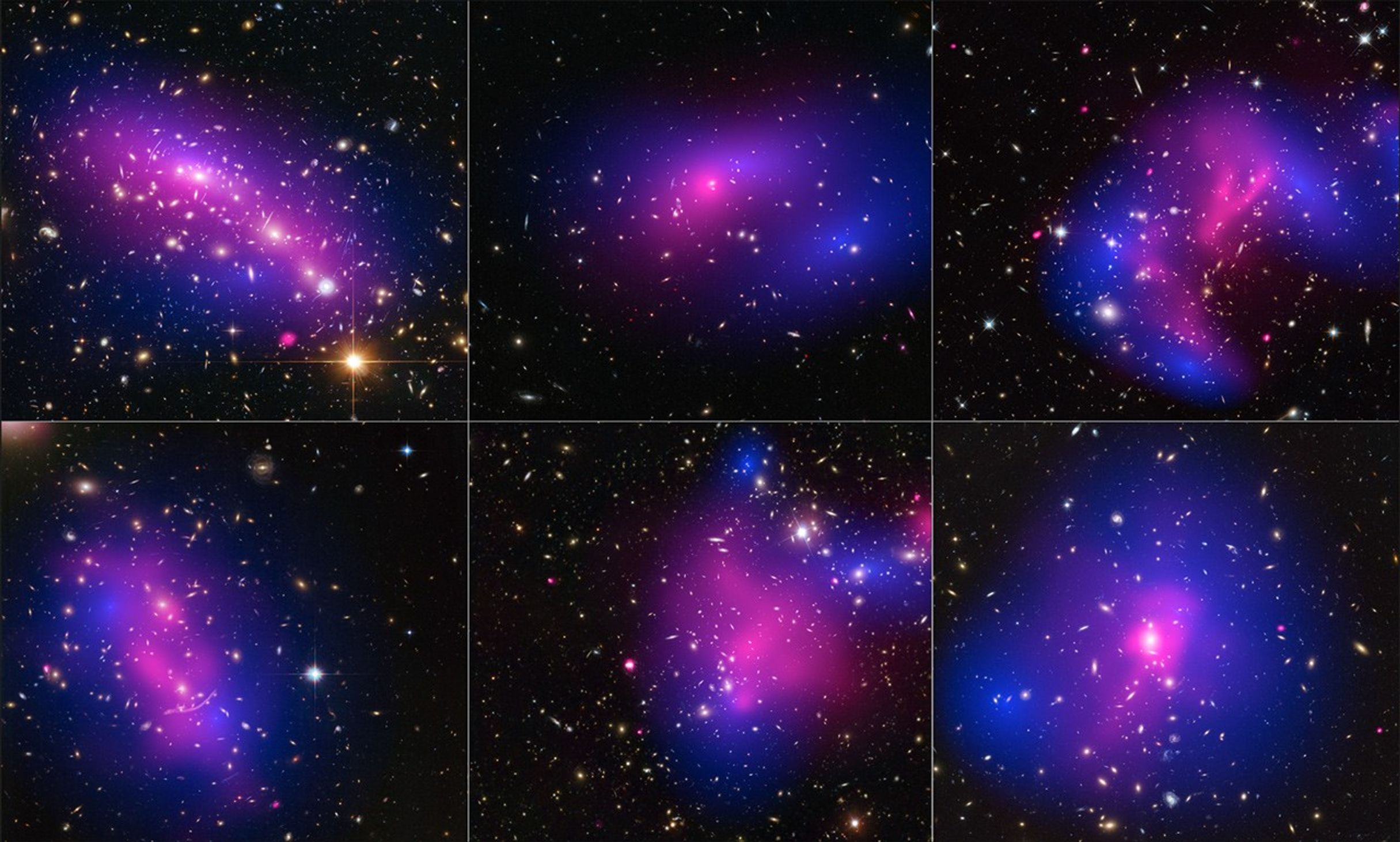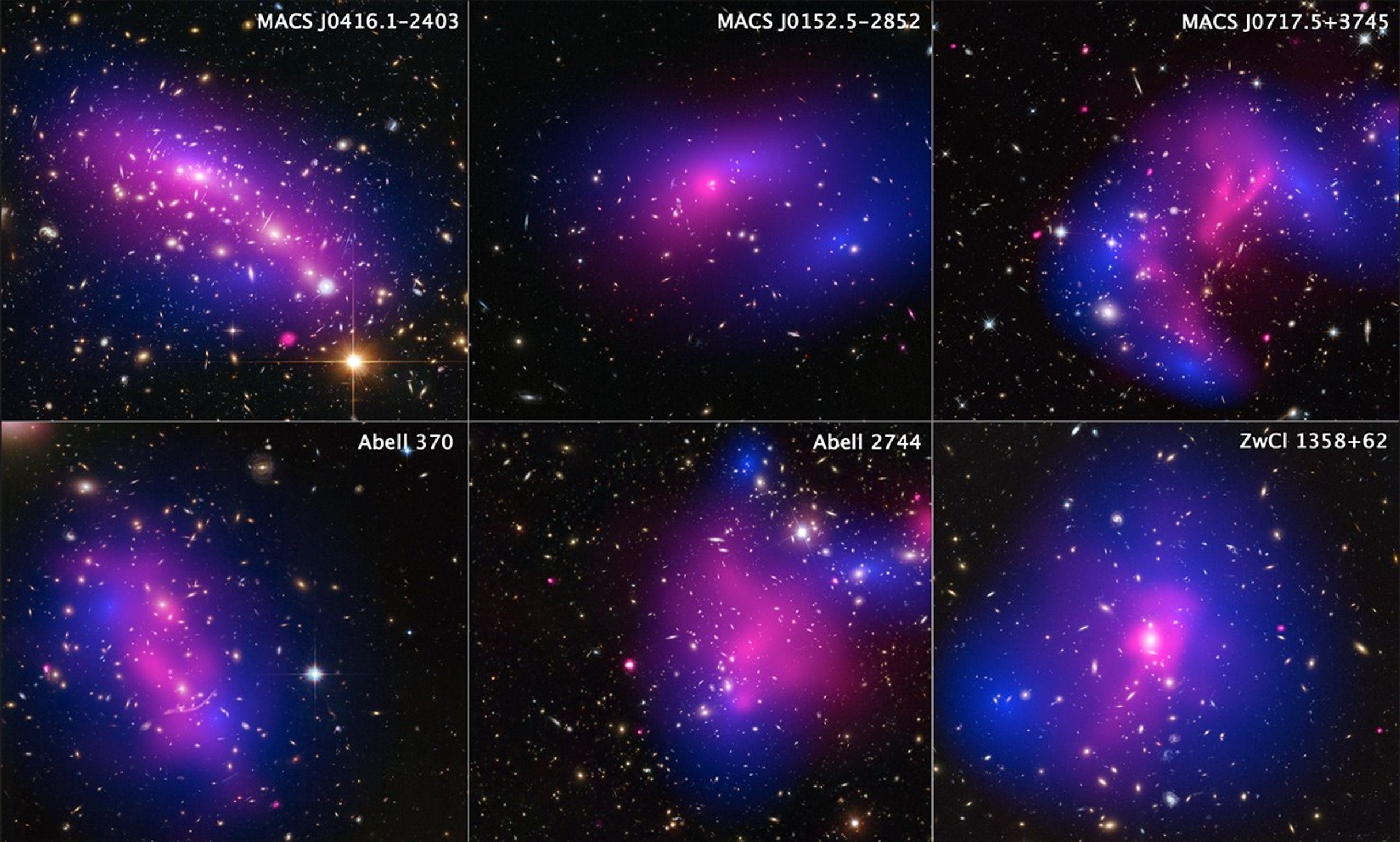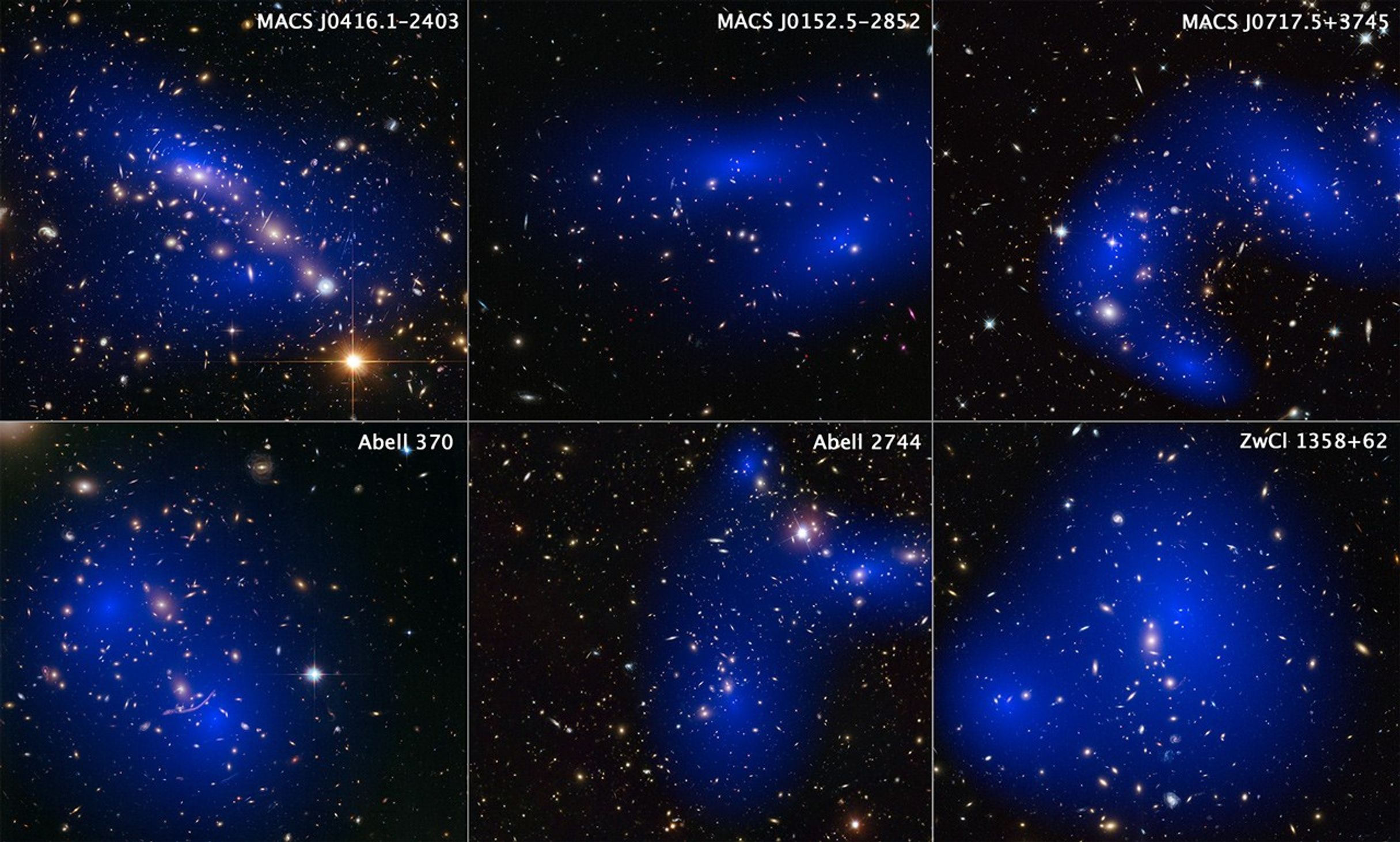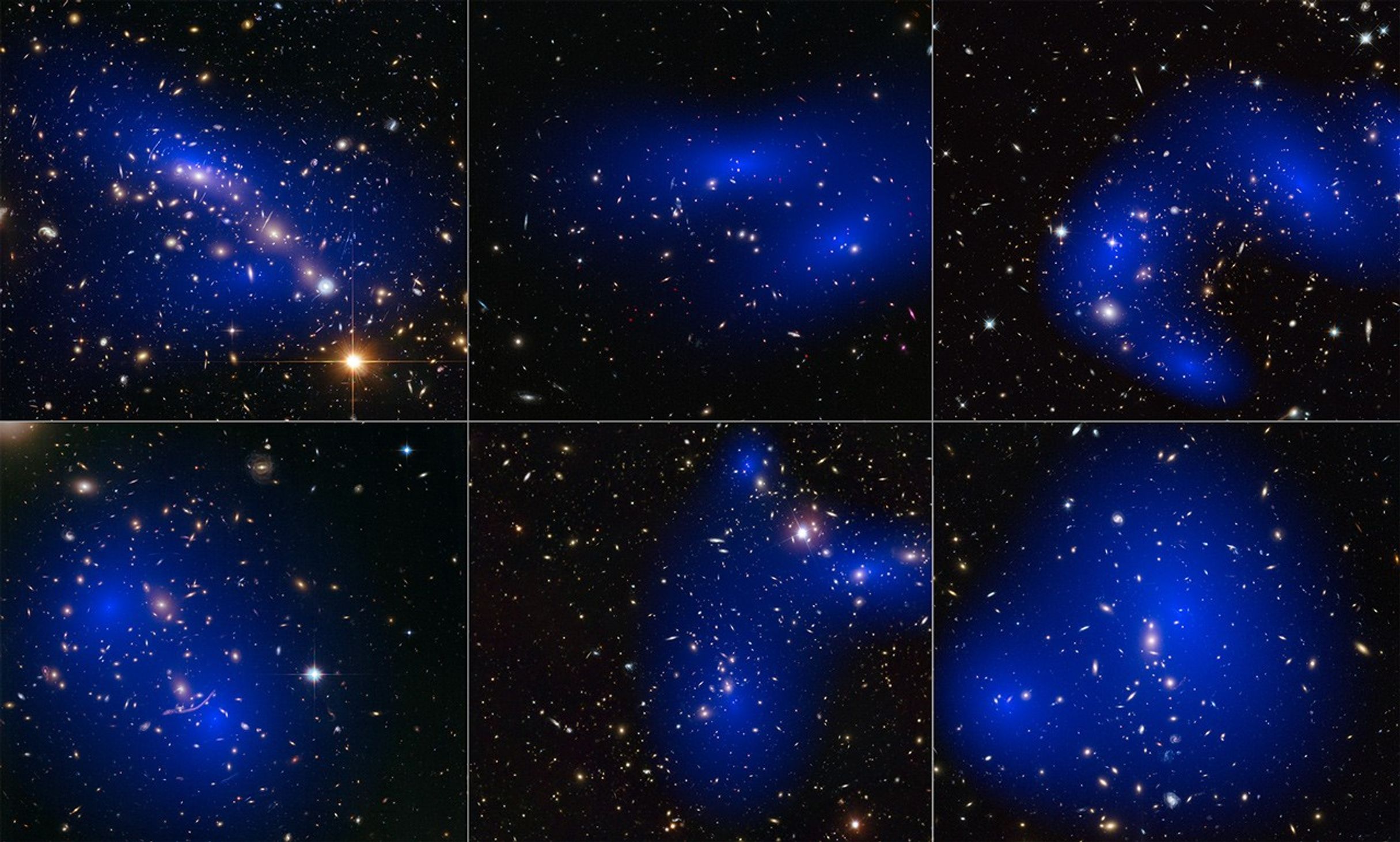1 min read
Six Galaxy Cluster Collisions, with Dark-Matter Maps (Hubble and Chandra)

About the Data
- Data DescriptionData DescriptionProposal: A description of the observations, their scientific justification, and the links to the data available in the science archive.
Science Team: The astronomers who planned the observations and analyzed the data. "PI" refers to the Principal Investigator.The images are created from various Hubble archive observations of galaxy clusters. The science team includes: D. Harvey (École Polytechnique Fédérale de Lausanne, Switzerland/University of Edinburgh), R. Massey (Durham University, UK), T. Kitching (University College London), and A. Taylor and E. Tittley (University of Edinburgh, UK). TOP ROW (left to right): Object Name: MACS J0416.1-2403 Constellation: Eridanus Distance Estimate: 4.29 billion light-years (z=0.396) Coordinates (J2000): RA: 04h 16m 09s.90 | Dec: -24° 03' 58".00 Object Name: MACS J0152.5-2852 Constellation: Fornax Distance Estimate: 4.43 billion light-years (z=0.413) Coordinates (J2000): RA: 01h 52m 34.45s | Dec: -28° 53' 42".23 Object Name: MACS J0717.5+3745 Constellation: Auriga Distance Estimate: 5.41 billion light-years (z=0.545) Coordinates (J2000): RA: 07h 17m 33s.80 | +37° 45' 20".02 BOTTOM ROW (left to right): Object Name: Abell 370 Constellation: Cetus Distance Estimate: 4.12 billion light-years (z=0.375) Coordinates (J2000): RA: 02h 39m 50.5s | Dec: -01° 35' 08" Object Name: Abell 2744 Constellation: Sculptor Distance Estimate: 3.52 billion light-years (z=0.308) Coordinates (J2000): RA: 00h 14m 19s.51 | Dec: -30° 23' 19".18 Object Name: ZwCl 1358+62 Constellation: Draco Distance Estimate: 3.72 billion light-years (z=0.33) Coordinates (J2000): RA: 13h 59m 50.60s | Dec: +62° 31' 04".00
- Object DescriptionObject DescriptionThe type of astronomical object.Galaxy Clusters
- Release DateMarch 26, 2015
- Science ReleaseHubble and Chandra Discover Dark Matter Is Not as Sticky as Once Thought
- Credit

These images are composites of separate exposures acquired by the HST/ACS and CXO/ACIS instruments. Several filters and X-ray energies were used to observe the objects. The color results from assigning different hues (colors) to each monochromatic (grayscale) image associated with an individual filter or energy. In this case, the assigned colors are: Pink: X-ray Yellow: Optical Blue: Dark Matter Map
Related Images & Videos

Six Cluster Collisions, with Dark-Matter Maps (Hubble and Chandra — Annotated)
This collage shows images of six different galaxy clusters taken with NASA's Hubble Space Telescope and Chandra X-ray Observatory. The clusters were observed in a study of how dark matter in clusters of galaxies behaves when the clusters collide. Seventy-two large cluster...

Six Cluster Collisions, with Dark-Matter Maps (Hubble – Annotated)
This collage shows images of six different galaxy clusters taken with NASA's Hubble Space Telescope. The clusters were observed in a study of how dark matter in clusters of galaxies behaves when the clusters collide. Seventy-two large cluster collisions were studied in total....

Six Galaxy Cluster Collisions, with Dark-Matter Maps (Hubble)
This collage shows images of six different galaxy clusters taken with NASA's Hubble Space Telescope. The clusters were observed in a study of how dark matter in clusters of galaxies behaves when the clusters collide. Seventy-two large cluster collisions were studied in total....
Share
Details
Claire Andreoli
NASA’s Goddard Space Flight Center
Greenbelt, Maryland
claire.andreoli@nasa.gov




























